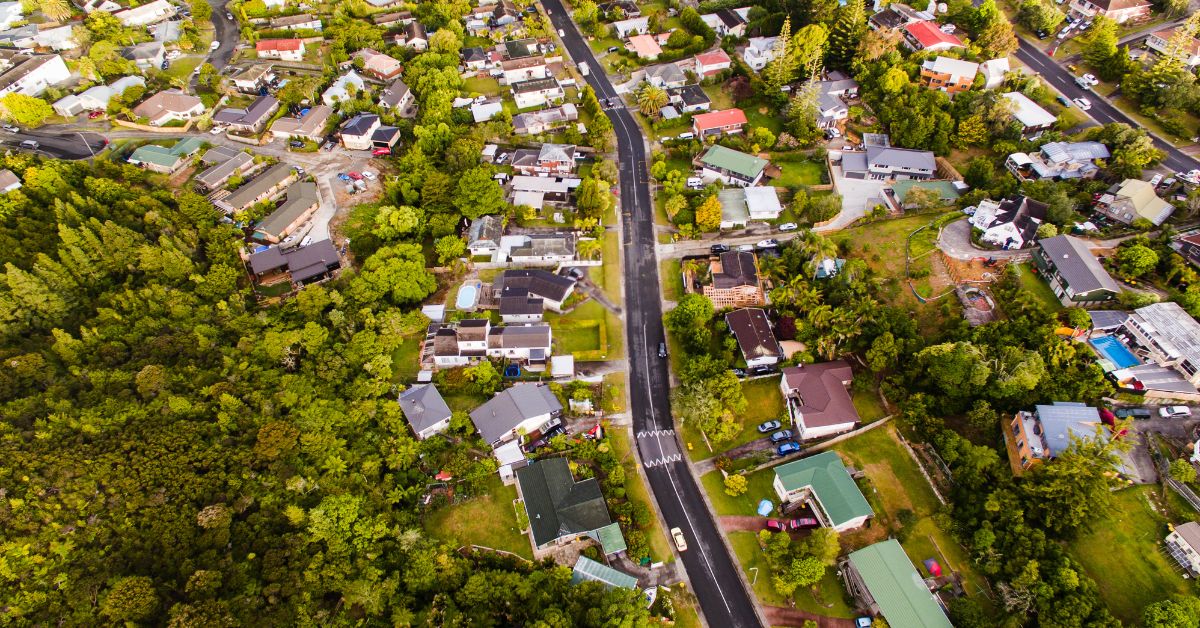Property Market: A Resilient Rebound in Late 2023
The property market has displayed notable resilience and improvement, as evidenced by the Real Estate Institute of New Zealand’s (REINZ) November 2023 figures. The data reveals a surge in sales activity, increased property listings, and an overall sense of confidence in the market compared to the previous year.
REINZ chief executive Jen Baird notes that November’s trends reflect a slow and steady improvement post-election, marking a more active phase in the property cycle.
Property sales witnessed a substantial increase, rising by 15.7 percent month-on-month and 12.2 percent year-on-year, reaching 6,422 from 5,550. Excluding Auckland, the pattern remains similar, with a 17.0 percent month-on-month increase and a 12.2 percent year-on-year increase.
Regionally, only three of the 16 regions experienced a decrease in properties sold month-on-month, while two had decreases year-on-year. Nelson stood out with the highest month-on-month increase of 51.3 percent, followed by Tasman at 32.8 percent and Wellington at 31.1 percent.
The national median sale price remained stable at $790,000, representing a modest year-on-year decrease of 2.0 percent. Excluding Auckland, the median sale price dropped by 1.4 percent to $700,000. Notable exceptions included the West Coast, with a substantial 17.4 percent month-on-month increase to $399,500.
Market positivity and future outlook
Baird emphasises the positive sentiment permeating the market, with increased open home attendance and auction room activity in various regions.
“Local agents are reporting steady activity across different buyer groups, with more competition for buyers’ attention in areas where listings have increased. With median prices either largely unchanged or slightly lower year-on-year in a number of regions, for some buyers, now will be the time to act,” Baird said.
“November has brought the expected lift in the number of properties coming to market and a significant increase in the number sold – a sign of positivity returning to the market.
“Open home attendance numbers and auction room activity have picked up as well in many parts of the country and we expect to see the number of properties sold across New Zealand increase in December, as we enter the busier season for real estate and people taking action to sell or buy before the pause at Christmas. Overall sentiment appears to be more positive, although this does vary by region.”
Days to sell and inventory
The national median Days to Sell remains at 38 days, indicating a slight acceleration in the market. Regionally, the West Coast and Nelson experienced notable decreases of 22 and 17 days, respectively.
At the end of November, the total number of properties for sale across New Zealand decreased slightly year-on-year by 1.5 percent, totalling 28,014.
New listings and market dynamics
New listings increased by 5.2 percent nationally year-on-year, with a substantial 12.4 percent month-on-month increase. Gisborne led with a 75 percent increase, and Wellington, Manawatu-Whanganui, and Nelson saw increases in the mid-20 percent range.
“While factors like interest rates continue to impact the market, it certainly looks as though buyers and sellers are heartened by the fact that the election is over and the Official Cash Rate is stable. Although we will see some slowing over the Christmas period, we anticipate seeing a resurgence of activity from the end of January, as the boost in market positivity helps raise confidence further,” Baird said.
A report by ASB Economists noted the housing marketing gained ground in November, with prices up 0.4 percent on a seasonally adjusted basis.
This recovery follows a period of flat prices during September and October, which they attributed to election-related uncertainty. Wellington experienced a notable 2.3 percent rise, reversing the previous quarter’s 1.8 percent decline.
Although there was little change in sales at a national level, sales volumes and days to sell imply a warmer housing market compared to the beginning of the year, the report said.
Impact of immigration
Despite New Zealanders looking overseas for new opportunities, with figures released from Statistics NZ showing a record 45,000 Kiwi left the country in the past year, there was an overall net gain of 129,000 people moving to our shores.
This saw an increase in our population last year of 2.5 percent, which is likely to have an impact on the housing market.
Independent economist Tony Alexander notes that although rising property prices are evident, the surge in demand from foreigners unable to buy houses is likely to affect the rental sector. Increasing demand for rental accommodation, coupled with a period of discouraging rental policies, may lead to higher rents.
“Rising demand yet falling supply means rents go higher. How high? Again, I’ve never seen a reliable model for predicting rents growth,” Alexander said.
“But the risk is that increases become quite large as we move through 2024 because not only can landlords now pick and choose amongst potential tenants, but they can also more easily remove those unable to pay higher rents. They also have to pass on some hefty increases in costs like council rates, insurance, and maintenance.”
This, in turn, could drive more people towards homeownership, especially young buyers.
Future trends and market predictions
Looking ahead to 2024, Alexander indicated several macro factors may influence the market.
They include potential falling interest rates, increased demand from investors due to changes in interest expense deductibility, and rising demand from first home buyers could contribute to further price increases.
“These four big fundamentals discussed here will likely comfortably swamp the impact of a rising unemployment rate and see prices on average rise much more than has been the case for calendar 2023.”



